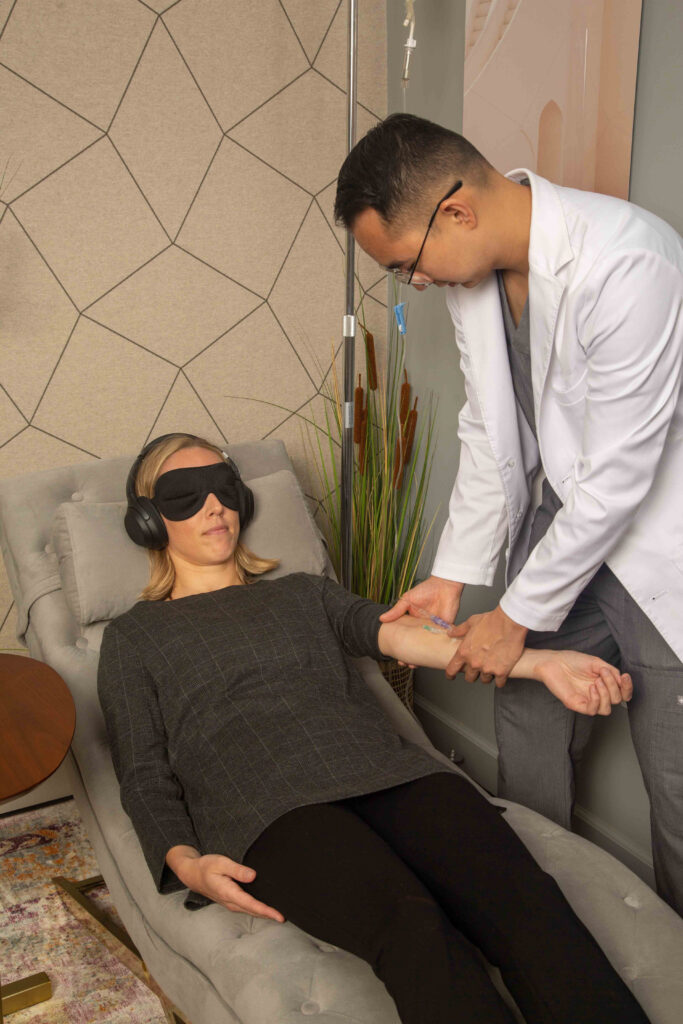Environment shapes every experience, and ketamine therapy is no exception. In fact, its impact is so profound that psychedelic researchers coined a term for it: Set & Setting.
In the 1960’s Harvard psychologist Timothy Leary brought the term to wide recognition after publishing a guide to the psychedelic experience, which presented the idea that an intentional set and setting can enhance a psychedelic experience, which a lack of set and setting can detract from it. Leary and his co-authors posited that a psychedelic drug is not directly responsible for a transcendent experience. Rather, they state that it acts as “a chemical key–it opens the mind, frees the nervous system of its ordinary patterns as structures.” They argue that the quality of a psychedelic experience extends predominantly from the journey’s Set & Setting.
Set
Set essentially refers to your inner state before entering a psychedelic experience. Nerves and guardedness prior to taking a psychedelic may result in a vastly different episode than entering with a sense of calm and openness. But Leary takes this notion one step further, indicating that beyond mood, personality and life experiences greatly influence a psychedelic journey.
The dissociating effects of psychedelics create space for thoughts buried deep in the subconscious to emerge. The subject and texture of these subconscious ideas add color to the overall experience. Set is what makes psychedelic encounters singular; no two people have the exact same histories, world views, or fears, so no two psychedelic journeys are alike.
While we can’t turn back time and alter our biographies, we can modulate our mindset.
It’s normal to feel nervous before entering into psychedelic therapy for the first time. The premise of this type of treatment asks you to let go of control of the outcome, which is unsettling for most of us. Visualization exercises, intentional journaling, and meditation and breathwork are all effective ways to soothe your nerves and invite a sense of openness into your treatment.
Receiving ketamine therapy at a reputable medical clinic is perhaps one of the most effective ways to manage your mindset. At clinics like Hudson Mind, experienced practitioners lead you through a series of relaxing exercises prior to administering the drug. Further, working with your psychotherapist during a ketamine treatment is also helpful for reframing your fears about the experience and what subconscious thoughts and memories you may encounter.
Setting
If Set is the internal component of a psychedelic journey, setting is the external. Setting refers to the actual environment where your treatment takes place. As the psychedelic-for-mental health industry expands, patients have more freedom of choice to decide where and how they receive treatment. Some organizations design at-home set-ups to maximize comfort, because being in a familiar physical space automatically reduces fears.
On the other end of the spectrum, clinical settings offer a sense of assurance. Psychedelics—specifically ketamine—are safe when administered in clinical settings, but that doesn’t mean that negative experiences never occur. Receiving this drug around individuals trained and certified in both ketamine’s physical and mental effects is the best way to quell fears and boost your Set.
While safety matters, no one wants to go on a mind-opening trip under fluorescent lights. Medical clinics recognize that building comfortable, serene spaces does more than just enhance aesthetics. If you’re new to this form of treatment, finding a clinic that supports their safety protocols with intentional, mood-boosting design details can spell the difference between a productive ketamine experience and a negative one.
Back in the 60s, Leary and his colleagues tapped into a vital component of psychedelics: rituals. For indigenous tribes that have long recognized the power of psychedelics, rituals have also played a significant role, as ceremonial elements are not just viewed as accessories to the experience, but rather, they are influential components of the overarching experience.
Every patient who visits Hudson Mind for ketamine therapy is taken through a series of relaxation-building exercises. From lighting and music to breathwork and journaling, Set and Setting are prioritized and personalized.
As ketamine gains more medical and mainstream recognition, it’s important that practitioners don’t lose sight of the qualifying ingredients that make this psychedelic so mentally and emotionally transformative. Because, as Timothy Leary indicated over 50 years ago, the true value of psychedelics is the sum of all of its parts.
Learn more about the potential benefits of Ketamine Integration Therapy.


